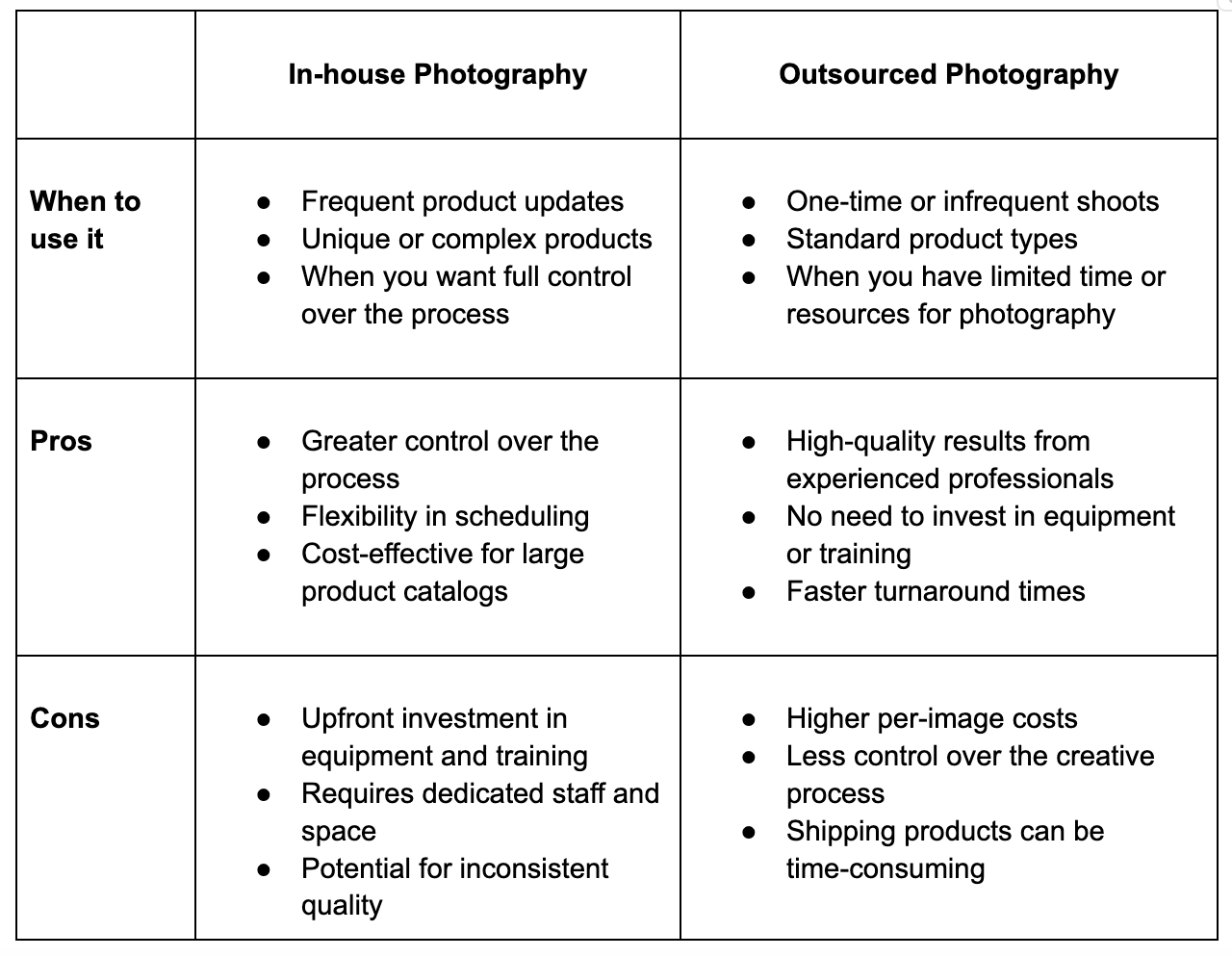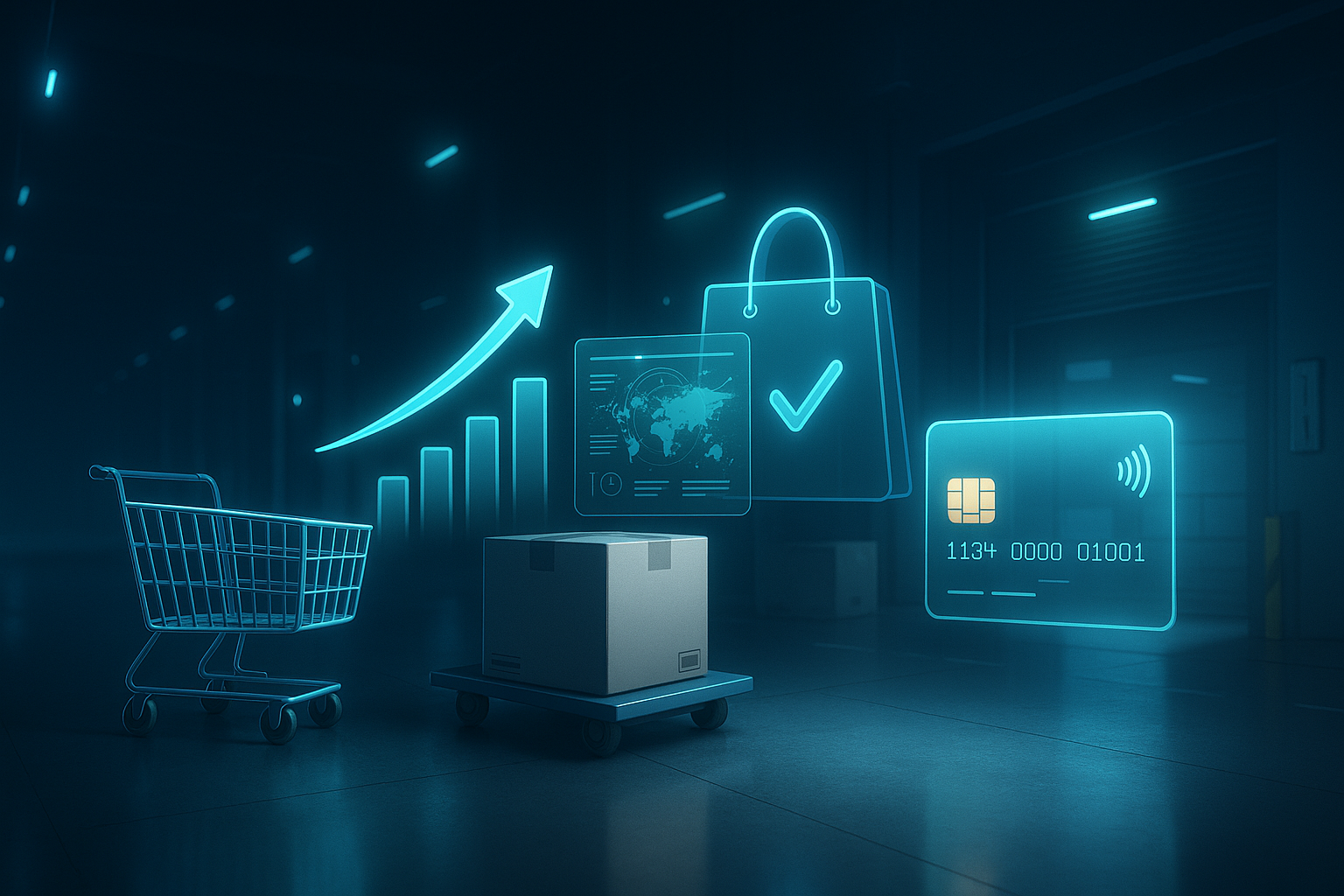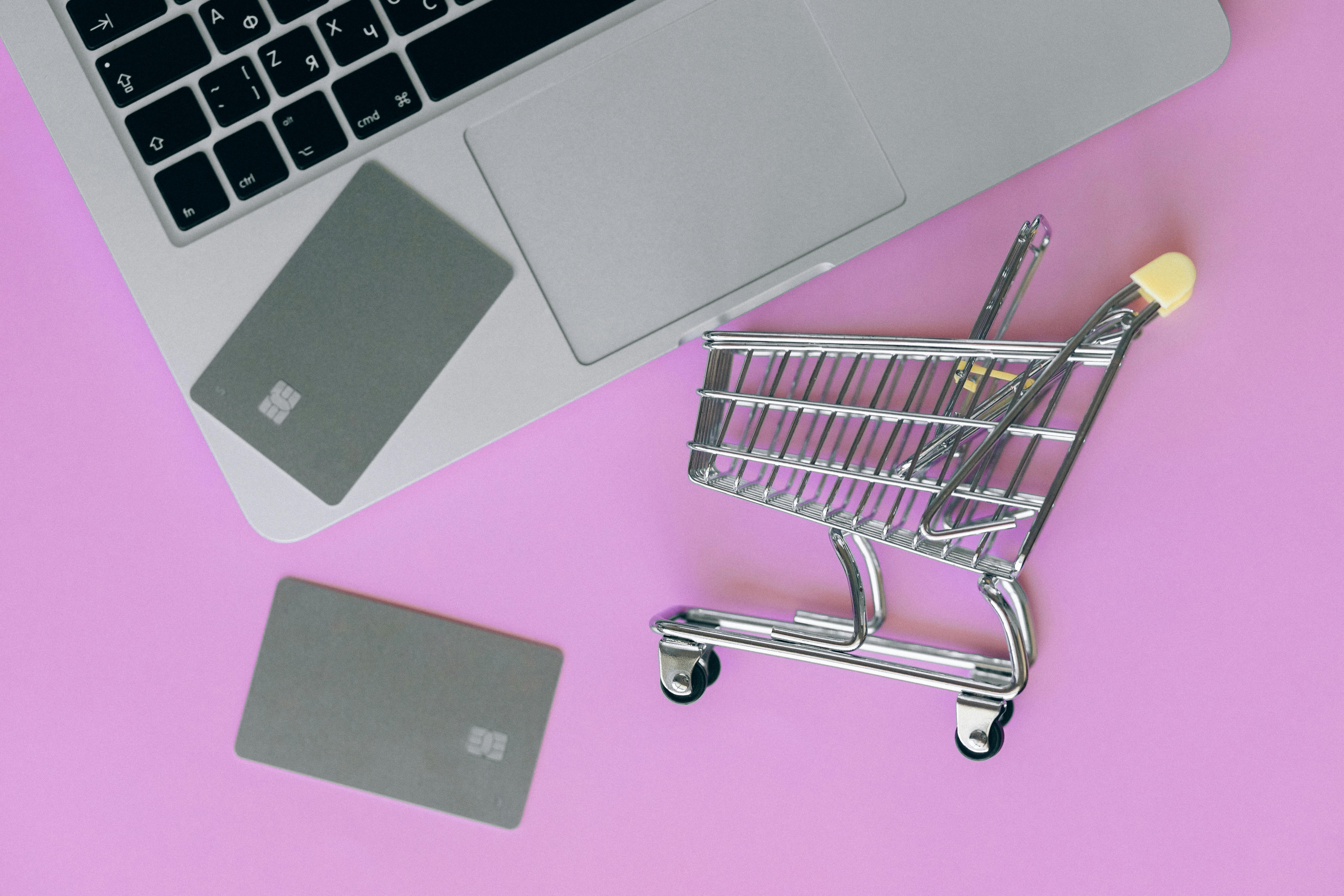

A survey conducted by Etsy revealed that 90% of its shoppers consider the quality of product images highly important to their purchase decisions — even more so than an item’s price, shipping cost, or reviews.
And with B2B buyers increasingly craving the same visually appealing, convenient shopping experiences B2C customers enjoy, B2B businesses cannot afford to overlook the importance of product photography.
But is it better to handle your B2B eCommerce product photography in-house or outsource it to a third-party professional?
It can feel like a big decision, and we are here to take the stress out of it.
In this article, we explore the pros and cons of each approach to help you make the best decision for your business — no matter your B2B eCommerce strategy. Plus, we provide tips for doing both.
Short on time? Here are the key takeaways
- In-house photography offers more control and flexibility but requires upfront investment in equipment and training.
- Outsourcing to a third party can save time and ensure high-quality results, but it might be more expensive in the long run.
- The best approach for your B2B company depends on your budget, product type(s), required image quality, and long-term business goals.
- Regardless of your choice, remember these key components of great product photos: lighting, composition, background, and solid post-processing.
In-house vs. outsourced product photography: Overview
Before we dig in, here is a quick overview of in-house vs. outsourced photography:

Now, let’s dive into the details.
In-house product photography
In-house product photography for eCommerce involves setting up a photography studio within your company and assigning staff members to handle the shooting and editing process.
This approach offers several advantages, such as greater control over the creative direction and the ability to shoot products as soon as they become available.
However, it also requires a significant upfront investment in equipment, such as cameras, lenses, lighting, and software. Additionally, staff members may need to be trained in photography techniques and best practices to ensure consistent quality.
Expert advice: When setting up an in-house studio, pay close attention to lighting. Invest in high-quality light sources, such as softboxes or LED panels, and experiment with different setups to find the most flattering light for your products.
Outsourced product photography
Outsourcing eCommerce photography to a professional studio or photographer can be a convenient option, especially for businesses with limited time or resources. Professional photographers have the proper expertise and equipment to create high-quality images that showcase your products in the best possible light.
Outsourcing also frees up your staff to focus on other aspects of your business, such as marketing, customer service, or ensuring eCommerce scalability and performance. That said, you must carefully vet potential photographers and clearly communicate your expectations to ensure the final images align with your brand’s style and requirements.
One potential drawback of outsourcing is the higher per-image cost compared to in-house photography.
In-house vs. outsourced photography: How to choose
When deciding between in-house and outsourced product photography for B2B eCommerce — whether you are in B2B retail or any other industry — there are several key factors to consider.
Answer these questions to help guide your decision-making process:
1. What is your budget for product photography?
Your available budget is a big deciding factor when picking between in-house and outsourced product photography.
If you are working with a tight budget, outsourcing to a professional could be a more practical option. You will skip the initial investment and pay only for the images you need.
If you can afford the upfront costs for equipment and training, in-house might be cheaper in the long run. In-house photography — while requiring investment in equipment, software, and labor — can become more cost-effective over time if you have a continuous need for images.
2. How much control do you need over the photography process?
If you have specific requirements for your product images, such as unique angles or custom props, in-house photography might be the better choice. This approach gives you complete control over the creative direction and allows you to make adjustments on the fly.
On the other hand, if you are comfortable providing guidelines to a professional photographer and trusting their expertise, outsourcing can result in high-quality images that meet your needs.
Expert advice: When working with an outsourced photographer, provide a brief with a detailed shot list (e.g., close-ups of machinery components, action shots of products in use, etc.) and visual references (including example photos) to ensure the final images align with your vision.
3. How does product photography fit into your B2B eCommerce strategy and business plan?
Good product photography for eCommerce is key to attracting and converting customers, making it a must-have component in your B2B eCommerce strategy.
So, when choosing between in-house and outsourced photography, consider how each approach fits into your overall eCommerce business plan — including your eCommerce revenue model, eCommerce goals, and target audience.
For example, a B2B company that sells specialized industrial equipment might opt for in-house photography. This allows the company to use its expertise to highlight its products’ unique features and technical details, appealing to its niche industry professionals' audience.
Conversely, a B2B enterprise focused on sustainable eCommerce and selling environmentally-conscious building materials might choose outsourced commerce photography. This offers the business access to a professional photographer’s expertise in showcasing the products’ eco-friendly features.
For instance, the photographer can highlight details such as recycled content, energy-efficient properties, or sustainable sourcing in a visually compelling way. Doing so helps the business effectively target architects, contractors, and other B2B buyers seeking to reduce their environmental footprint.
4. Do you and your team have the time and expertise required to handle post-processing?
Post-processing is an important part of product photography for eCommerce. Even the best shots may need adjustments for cropping, color correction, and retouching imperfections. This process can be time-consuming and requires specialized software and skills.
If you are handling product photography in-house, be realistic about whether your team has the time and expertise for consistent post-processing. Mastering editing techniques takes practice, and it could divert resources from other core tasks.
Outsourcing your B2B product photography can significantly streamline your workflow, as many professional photographers include post-processing in their services.
Plus, experienced product photographers will understand the right editing balance for your specific industry. This is especially important in sectors such as B2B construction, where images must convey a sense of realism and not be overly edited.
Expert advice: When it comes to post-processing, a little goes a long way. Aim for a natural, realistic look that accurately represents your products, and avoid heavy-handed editing techniques that can mislead customers.
Key components of a great product photo
No matter whether you choose to handle product photography for eCommerce in-house or outsource it to a professional, several components contribute to an excellent photo for eCommerce. These are:
Lighting
Proper lighting is essential for showcasing your products in the best possible way. Soft, diffused light helps minimize shadows and create an even illumination, while strategic highlights can add depth and dimension to your images.
When setting up your lighting, use three-point lighting — a combination of main, fill, and back lights — to achieve the desired effect.
Composition
The way you arrange your products within the frame can significantly impact the overall appeal of your images. Use the rule of thirds to create a balanced composition, and experiment with different angles and perspectives to add visual interest.
If you are showcasing multiple products in a single image, be sure to arrange them in a way that is both visually pleasing and easy to understand.
Background
You should use a simple background — either white or neutral in color — for your product photos. This creates a clean, professional look and keeps the focus on the product itself.
You can use a textured, patterned, or boldly colored background if you prefer, but you will need to ensure it does not distract from the product on display.
Post-processing
Even the best-shot images can benefit from some post-processing to enhance their overall quality. Basic adjustments such as cropping, exposure correction, and color balancing can go a long way in creating a polished final image.
Expert advice: Do not underestimate the power of great product descriptions. Pair your visually appealing product photography with well-written eCommerce copywriting to give shoppers all the information they need to feel confident and excited to make a purchase.
The bottom line
When it comes to eCommerce product photography, there is no one-size-fits-all solution. The best approach for your business will depend on various factors, including your in-house skills, budget, and eCommerce strategy.
By carefully considering the pros and cons of in-house and outsourced photography — and keeping in mind the key components of great product photos — you can make an informed decision that aligns with your needs and helps showcase your products effectively.

-modified.avif)



